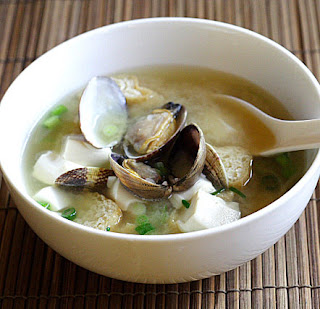Here are some examples of them:
KAZUNOKO (herring roe) represents fertility because of the abundance of roe in each piece of kazunoko.
KUROMAME are black (kuro) beans (mame), and ‘mame’ means to be healthy and have the ability to work hard.
TATSUKURI (small sardine) The ‘ta’ of tatsukuri means rice paddy field, while ‘tsukuri’ is fish that is used to fertilise the rice field. Further, the grammatical base form of ‘tsukuri’ is ‘tsukuru’, which means to make. As rice is so important to the Japanese diet, its abundance results in health and prosperity. Tatsukuri is also known as GOMAME, and when written in Chinese characters, it means rice harvests of fifty thousand years.


KO-HAKU-KAMABOKO (red or pink and white fish cake) represents the sucessfulness of the rising sun.
KO-HAKU-NAMASU (sweet and tart vinegared red or orange carrot and white daikon radish) the white of the daikon represents purity and the red of the carrot shows the activeness of the sun. The combination of red and white shows happiness.
KURI-KINTON (chest nut and sweet potato paste) In Chinese characters, the kin means gold and ton means group. Therefore, this means group of gold for prosperity.
TATAKI-SU-GOBOU (vinegared patted burdock)Hoping that one’s home will be like the widely spread and firm root of the burdok (gobou). Pounding and breaking (tataite hiraku) the burdock is related to the ancient saying “Knock and the way will be opened, or open the way and get good luck.”
KIKUKA-KABU (chrysanthemum shaped vinegared turnip) KIKU (chrysanthemum) is the symbol of the Japaense emperor, and is used for happy occasions.
RENKON (lotus root) has holes in it, through which we can see ahead to the new year.
SATOIMO or YATSU-GASHIRA (taro) gashira or kashira means a head, and an important person.
KOUBAININJIN (plum flower shaped carrot) All the plum flowers have fruits, and this wishes one to have many babies.
TAKENOKO (bamboo shoot) represents growing quickly like a bamboo shoot.
BURI-TERIYAKI (yellow tail, prepared teriyaki style) Yellow tail has different names in Japanese according to its size and age. This is similar to a person’s status in society, depending on social and professional factors.
EBI (prawn) The shape of a boiled prawn is the same as an elderly person, and this represents longevity.
credit: http://www.japanesefood101.com/index.php/festive-food-for-the-new-year/happy-japanese-new-year/
......................................................................................................................................................
O-sechi and O-zoni Japanese New Year's Cuisine »









